The Benefits of Having Roof Vents
Rain Heads Custom Made Shipped Free Australia Wide – Click Here >
Dambuster Rain Heads Shipped Free Australia Wide – Click Here >
Commercial Industrial Roof Vents 300mm-950mm – Click Here >
Eco-Friendly Roofing Insulation Shipped Free – Click Here >
Gutter Sumps Shipped Free Australia Wide – Click Here >
Roof Ventialtion for Your Home is Esssential
A roof is essential to any home as it will protect other parts of the house from wind, sun, and rain. Although you have to take care of your whole house, more efforts should be concentrated on the roof as it is an essential part. By maintaining your roof, you will increase its life span and save your pocket in the long run.
There are many ways to maintain your roof, and one of them is having vents installed. However, you should note that not all vents will work on your roof, and this is the main reason why you should make some considerations before settling on any of the available options.
Another thing is to have your vents installed by a qualified professional so that they will be beneficial and last as required. After installation, you can maintain your vents on your own, but if you find it hard, you can avoid the hassle by getting help from your preferred roofing company.
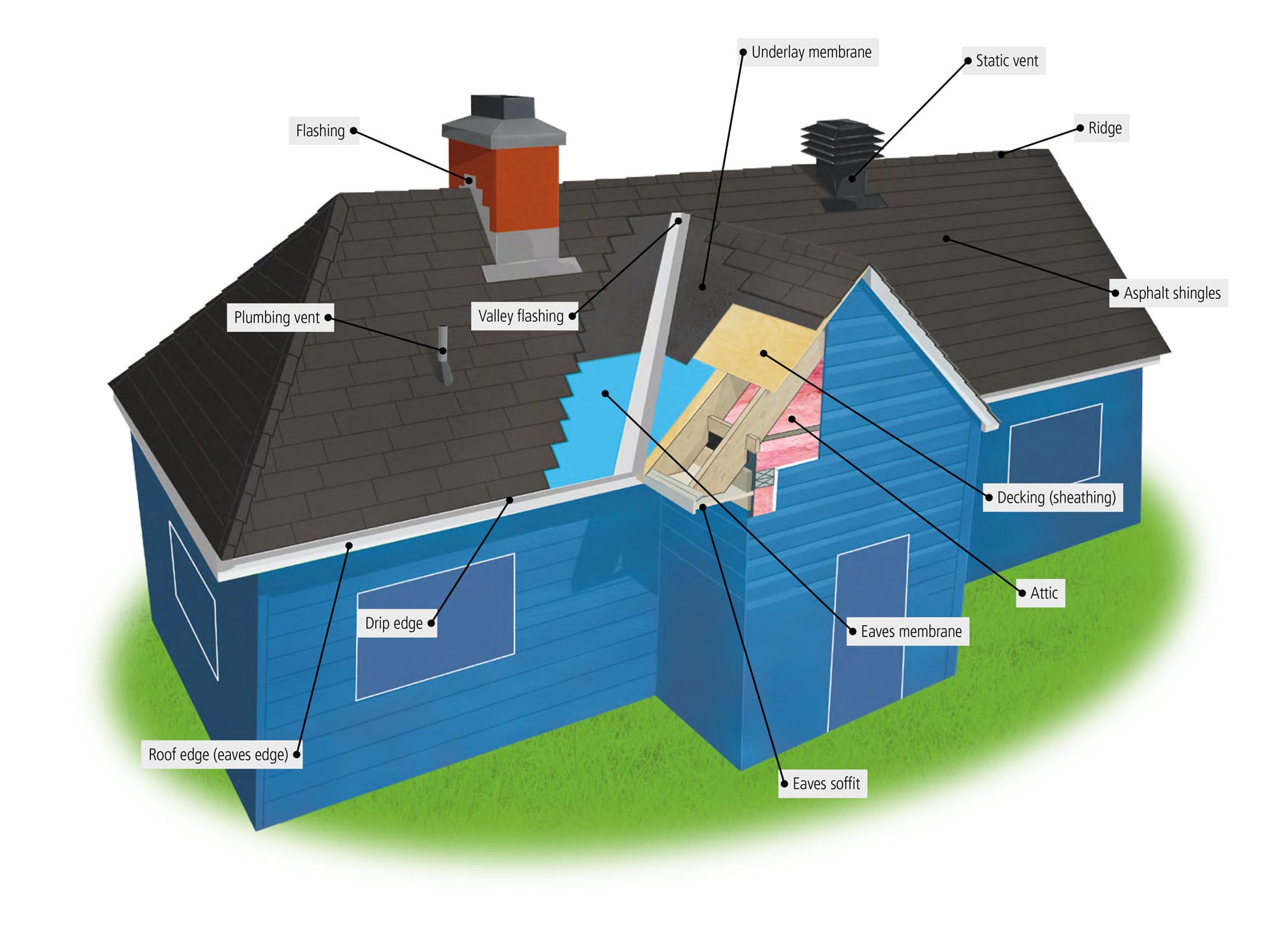
Types of roof vents you can install
Roof vents can be generally classified into three classes: –
Powered Vents, Wind Powered Rotary Vents & Static vents
Static vents need no power to operate because they have no moving parts. Types of static vents include box vents, cupola vents, and ridge vents. Static vents have no moving parts and therefore work best when installed closer to the rooftop where the hot air accumulates. They are not as effective as fan-powered vents.

Powered vents, on the other hand, can be classified further into two classes:
Electrically powered vents and vents powered by renewable sources of energy. Electrically powered vents draw power from the home electricity grids and can contribute significantly to the electrical bill. They use an electric vent to pull the hot and humid air out of your attic. They can be quite complicated and may be expensive to install. They can be set to activate at specific temperatures to save energy and may be necessary for individual complex roof systems.
Vents powered by renewable sources of energy are the best of both worlds as they boast of more effectiveness compared to static vents and less recurring costs compared to electrically powered vents, which can be costly to maintain.
Among these vents are wind-powered vents also known as whirlybirds and Solar vents
Wind-powered vents use the wind to draw the hot and humid air out of your attic. It operates when the wind hits the turbine fans, causing the vents to rotate. This motion creates a pressure difference that sucks the hot air out of your attic, therefore, encouraging movement of air from downstairs towards the attic, creating a continuous flow of air hence cooling the house significantly.
Solar-powered vents work identically to electrically powered vents, with the main difference between them being that solar vents use the solar energy to power their operation. They also work whenever the sun hits the panels instead of operating when the thermostat indicates that the attic has become overheated. The solar panels need to be mounted where they get maximum direct sun for proper operation.
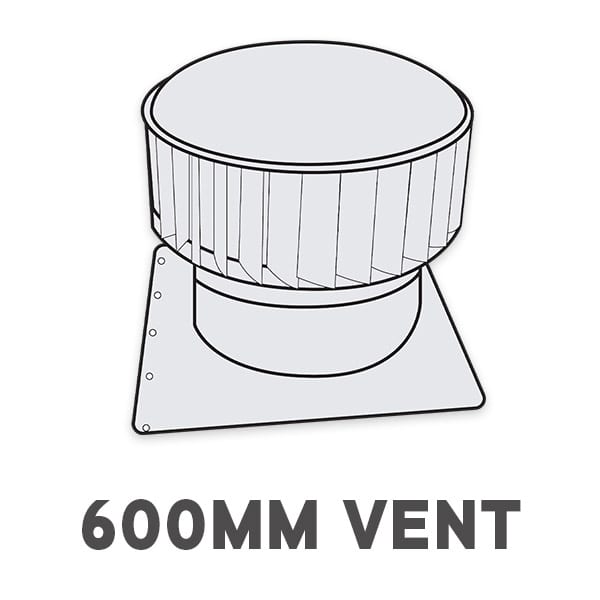
Supply & Installation Price
Sydney Metro Only
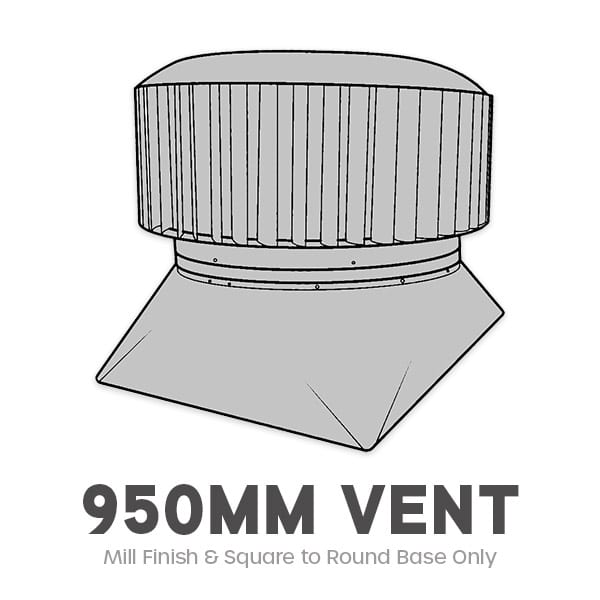
Supply & Installation Price
Sydney Metro Only
1 Roof Vent
Supply & Installation Price
$520/1
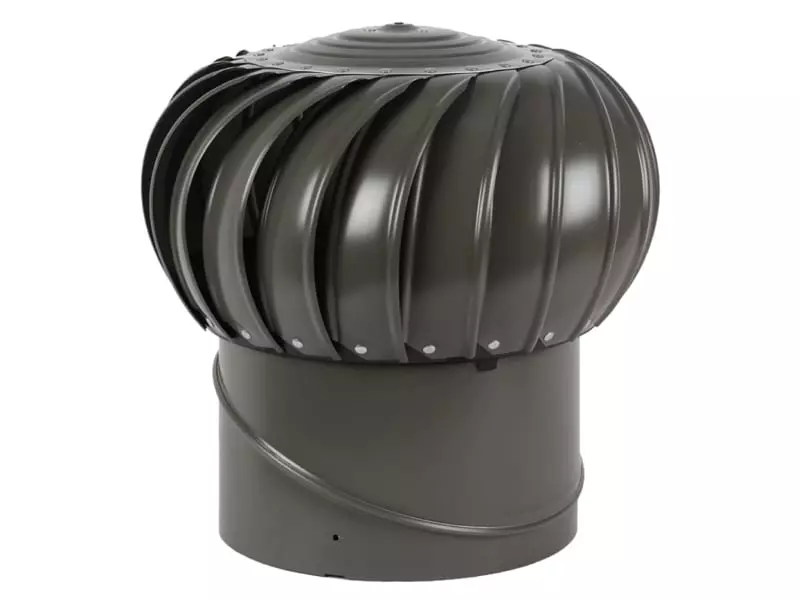
1 Ampelite 300 Spinaway
Colorbond or Mill Finish Supply & Installation Price
Download PDF
2 Roof Vent
Supply & Installation Price
$860/2
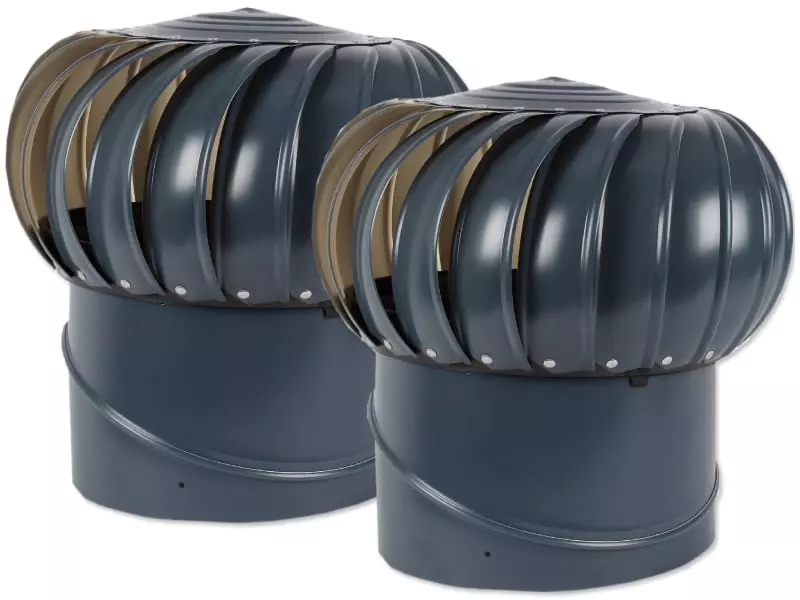
2 Ampelite 300 Spinaway
Colorbond or Mill Finish Supply & Installation Price
Download PDF
3 Roof Vent
Supply & Installation Price
$1,090/3

3 Ampelite 300 Spinaway
Colorbond or Mill Finish Supply & Installation Price
Download PDF
4 Roof Vent
Supply & Installation Price
$1,300/4

4 Ampelite 300 Spinaway
Colorbond or Mill Finish Supply & Installation Price
Download PDF
The advantages of whirlybirds are the following:
They are cheap and are easy to install: – Whirlybirds are significantly less expensive compared to other ventilation options and are also easier to install compared to other options like electrically powered vents that require specialized equipment and skillset to install.
They have few to no running costs: – Whirlybirds have no running costs or recurring costs other than the occasional checkup and greasing of the moving parts.
Few to no breakdowns compared to other ventilation options due to their few mechanical moving parts as well as less complicated makeup.
The disadvantages of whirlybirds include the following:
They are dependent on airflow and therefore are ineffective in areas with the minimal wind: – They cannot spin when there is no wind, thus making them useless in such conditions. Therefore, in dry summers, when there is little to no wind, the whirlybirds cannot function as intended.
Whirlybirds cannot be turned off during the winter, which can lead to the house losing heat, therefore, increasing the resultant heating costs.
Whirlybirds can also become noisy when there is strong wind or when they age. Also, due to their open design, the functionality may be compromised when they catch debris, leaves, and other foreign objects.
Multiple whirly birds may be required to cool a large house that can compromise the aesthetics of the home.
Despite the above demerits, whirlybirds are relatively common due to how much they reduce the cooling costs of a home.

Solar vents on the other hand, boast of the following advantages:
They do not add to the home electrical bills since the entire system is powered by the sun’s solar energy, which is readily available and cheap to tap into.
They can improve the home’s aesthetic appeal because, unlike other options, that can be quite bulky. Solar vents can be sleek and therefore, can streamline the house’s look. They are also noiseless, thus reducing distractions in the home.
They are also easier to install as opposed to the electrical vents which require electricians for installation.
They improve the house’s energy efficiency because a cooler attic area contributes to lower energy requirements throughout the other parts of the house. They only work when you need it as opposed to the traditional models like whirlybirds, which operate as long as there is wind. This is because you only need cooling when the sun is out, and the solar vents work only when the sun is out.

The cons of installing solar vents are the following: –
There are high installation costs when compared to traditional models: – The capital cost of solar attic fans is higher compared to that of conventional models. This creates a barrier to entry that bars some homeowners from purchasing them.
They move smaller volumes of air when compared to some other options in the market, and therefore, multiple solar attic fans may be needed to move sufficient amounts of air necessary to cool the house. This may double or even triple the initial capital cost.
They need direct sunlight to operate: – Direct solar radiation is required for operation. This limits the areas and periods of operation of the solar vent to regions with year-round solar radiation. The attic can also heat up due to the thermal energy of the sun even when there is no direct sunlight. Therefore the solar vents do not operate to dissipate this heat leading to high cooling costs due to the overworking of the cooling system to compensate for this deficiency.

What should you consider when choosing the rights vents for your roof?
Now that we have introduced the various types of roof ventilation available and their pros and cons. It’s time to add the considerations to be taken into account when choosing the right roof ventilation method and why whirlybirds are the best and most common choice for you.
Chief among the factors to consider when choosing the right ventilation method is cost, both the initial capital cost and recurring costs, such as maintenance cost and energy costs. Among the methods listed above, electrically powered vents have the most significant capital costs and recurring maintenance costs, therefore, making them the most prohibitively expensive among the listed options. These large capital costs make them widely unpopular among most homeowners.
Solar vents are relatively cheaper compared to the electrically powered vents. They also have fewer recurring costs because they need little maintenance. While their initial capital costs are large, they are not as prohibitive compared to the electrically powered vents, and their costs of installation are similarly lower. The only significant advantage electrically powered vents have over solar vents is the volume of air they can move compared to solar vents, which run much smaller quantities of power. Therefore, multiple solar vents may be required to match the volume driven by electrically powered vents.

More on Whirlybirds
The last option, whirlybird roof vents are much cheaper compared to the earlier listed options. They are very reasonable and have no maintenance costs of any significance. While several of them may be needed to move the same volumes of air driven by the electrically powered vents or even the solar vents, they are so cheap that the total costs cannot match the costs associated with the earlier options. The fact that they do not add to the home’s electricity bill is merely the icing on the cake.
The second consideration is the physical conditions of the area in which the house is located. While the electrically powered vents are mostly unaffected by their locational characteristics, the other two options are not as similarly immune. The solar vents, for instance, are affected by the time under sunlight as well as the season. They are best installed in areas that experience year-round sunshine, and the quality of the sun is good since, for best operation, they require maximum direct sunlight exposure. The wind-powered vents, on the other hand, are best installed in locations that experience enough wind to run the vents since they cannot run in the absence of wind. However, the volumes of wind required to run them are small and therefore are suitable for most places that have prevalent winds.
The third consideration is the size of the house to be ventilated. The size of the house influences the volume of air to be moved to sufficiently ventilate the house. Therefore, large homes require options that can move large amounts of air, such as electrically powered vents or multiple vents, to be installed, which adds up to the required volume of air. In such cases, the prohibitive costs associated with electrically powered vents have caused homeowners to install multiple whirlybird roof, which can move the vents required amount of air with fewer expenses. In places where the summer can get unbearably hot, the hot air naturally moves towards the top, therefore, complementing the operation of the whirlybirds by setting up a continuous current of winds, not unlike those found in the mountains.

More on Roof Ventilation
Another consideration when choosing roof ventilation is the purpose of the attic. What will the attic be used for? If the attic is used for living, the method chosen should move air unobtrusively and be safe to be used near humans. This eliminates the electrically powered vents due to the amount of air moved, which tends to make the atmosphere choppy. They also pose a safety risk to the person living in the attic due to electrical hazards, which can have catastrophic effects. Solar vents, even while easier to live around, also use electrical currents that carry the risks associated with electricity. Whirlybirds, on the other hand, are only mechanical and therefore have fewer risks associated with them with none of the life-threatening ones carried by other options. They also move low volumes of air and therefore are comfortable to have around.
Another consideration when choosing your ventilation method is the expected benefits of installing roof vents. If the aim of installing roof vents was to reduce cooling costs, your choice of roof vents must be such that the recurring costs are not large and that they do not add to the cooling costs. This pretty much eliminates the electrically powered vents because they add to the electricity bills of the house. This leaves solar vents that have little recurring costs but have more substantial capital costs when compared to the whirlybird roof vents, which have very few recurring costs and smaller capital costs compared to the solar vents.
When choosing a ventilation option, one also has to consider the desired temperature and humidity. Electrically powered vents allow for more control and can go to both extremes and therefore are the most flexible. However, natural conditions are preferred as opposed to extremes, and therefore an option that allows for extremes in unnecessary. What most homeowners prefer is a balance between the extremes temperatures. Solar vents can cater to this particular need well enough, but their operational ability is limited by the sunlight such that in intense sun, the house becomes much cooler than at other times. Whirlybirds on the hand maintain a consistent temperature in the presence of stable winds, and since winds rarely change, the house is kept at a warm and pleasant temperature.
The last consideration is availability and ease of installation. Electrically powered vents are not readily available in remote locations, and they require a particular skill set to be installed. This also translates to the maintenance since, in areas whereby they aren’t readily available, the skillset needed to maintain these systems will not be available. Whirlybirds, on the other hand, requires no specialized skillset for either installation and maintenance, therefore, making it suitable for any location remote or in towns.
From the above considerations, we can readily see the versatility afforded by wind-powered vents as opposed to the other methods. Other factors, such as aesthetics, can be countered by the environmental consciousness demonstrated by the use of whirlybirds. There are, therefore, fewer costs and better functionality per dollar associated with the whirlybirds compared to the other options.

How to choose the right roofing company?
After deciding on the exact vents to install, you will need to get a company to install the ventilation for you. Many professionals are offering the service; unfortunately, not all of them you can trust with your expensive roof. So what should you do to ensure you get the right company?
1. Get referrals
The best way to ensure you get your desired roofing company is by asking your friends and relatives to recommend to you a roofing company if they have worked with one before. The good thing with this option is that you can check what the company did before hiring them.
2.Hire an experienced company
Although new companies may have the required skills and tools, its always better to go for an experienced one as you will be sure they will handle your roof. Trained professionals will need less supervision, and they will know what you need as they have dealt with the same cases before.
3. Get a licensed company
Licensed companies will have the right professionals who have undergone the necessary training. Licensed companies will also undergo verification by the local authorities before being licensed. This will guarantee you the safety you need, and in case of anything, you know where to get them. Before hiring any company, ensure you check their rating on the local authorities.
You should not forget to check if the company is insured. This way, you are sure that you can be compensated in case anything happens to your roof.
Conclusion
Maintaining your roof is very important regardless of the type of roof you have and where you live. One sure way to maintain your roof is by installing vents in which whirlybird roof vents can do better. All you need is to have your vents installed by the right company. RVA roofing is the right choice for you. Here you will have whirlybird roof vents installed to your home professionally and with less costs.
